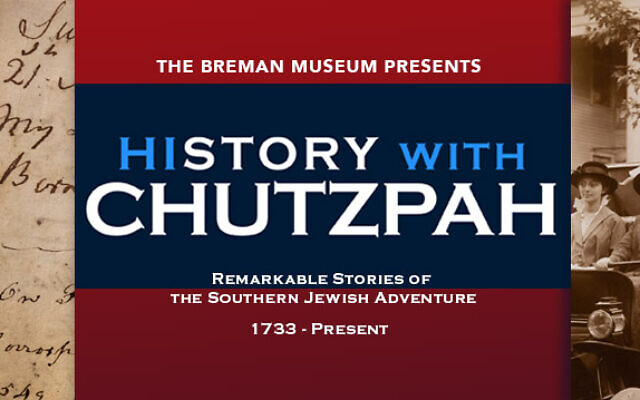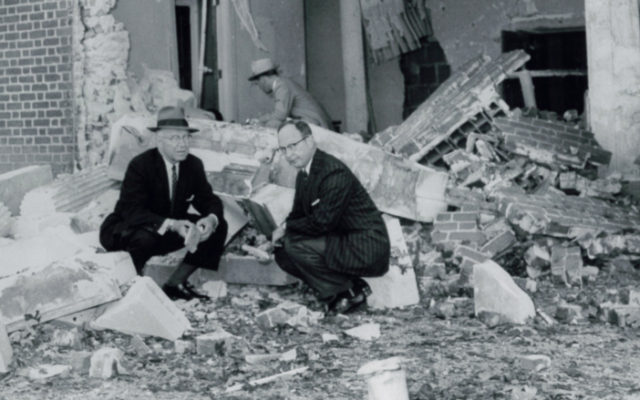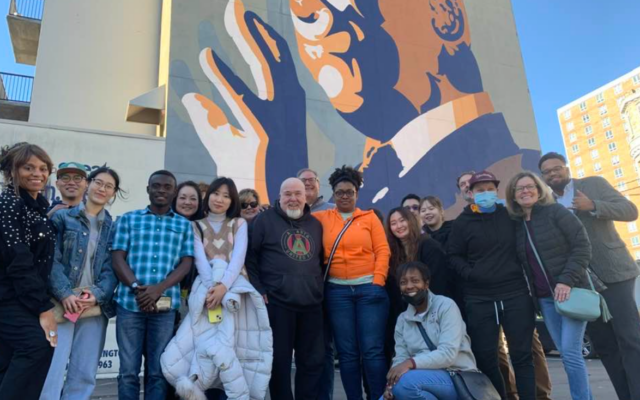Take a Vacation with History in Atlanta
A view of Jewish history is intricately woven into the history of Atlanta in several tours.
For those who choose a staycation around the subject of contemporary Atlanta history, there is no better place to start than Tom Houck’s civil rights bus tour. The 76-year-old Houck is one of the relatively small handful of living civil rights workers who had personal, day-to-day contact with Dr. Martin Luther King, Jr. during the height of the civil rights struggles of the mid-1960s. The Boston native is part of an even smaller group of white civil rights veterans who worked directly with King during the period.
After going to work for the Southern Christian Leadership Conference, first as King’s driver and later as a civil rights organizer in the deep South, Houck became a radio talk show host in Atlanta and a political pundit on WAGA-TV, Fox 5’s The Georgia Gang. For the last eight years, the political contacts he’s made over more than half a century have helped him to reinvent himself as a tour guide.
From the front of a 30-seat bus that begins in front of The King Center in downtown Atlanta, Houck talks his way through his years making Atlanta history. His tour takes participants through King’s life from his birthplace, a few blocks from the Ebenezer Baptist Church, through his final resting place, Southview Cemetery. The body was later moved to the plaza in front of the King Center.

Houck estimates that as many as 40 percent of those taking the tour are Jewish, and he’s done programs for synagogues and national Jewish groups that have come to Atlanta for meetings. He has done a couple of tours for staffers at the Arthur Blank Family Foundation and, earlier this month, for the Carter Center, whose director, Elaine Alexander, is Jewish.
“I talk about Goodman, Chaney and Schwerner, two of whom were Jewish who were murdered during the voter registration drive in Mississippi, and I talk about the fact that well over half of the students that participated in that Freedom Summer of 1964 and 65 were Jewish,” Houck explains. “And of course, when I was arrested for protesting and I was arrested nearly 20 times, they put me in cells with the rednecks and the Klan and they would call me a white n-word and a kike, thinking I was Jewish.”
If you want to pick up the story of the Jewish role in the civil rights movement you can also tour The Temple on Peachtree Street in Midtown. The building, which is on the National Registry of Historic Places, was built in 1931 to replace earlier impressive structures dating back to 1878, including a building with Moorish-inspired onion domes on its towers. The tours are free, with advance reservations, handled by Kelli Harran, The Temple’s director of communications and engagement.

“The Temple is an important historical site, in part, because it is the city’s oldest synagogue. It was designed by Philip Shutze, also the architect of the Swan House, another prominent Atlanta institution.” Harran says. “We have prospective members and new members that ask for tours of the building, but we also have external groups, and we offer the tours, with trained docents, Monday through Thursday during 9 to 5 hours.”
Starting in 1946, when Rabbi Jacob Rothschild became the senior rabbi, The Temple was a center for progressive ideas, in both Jewish and American political life. Rothschild promoted support for Israel as a homeland for Jews and involved the congregation in the civil rights movement.
The author of “Driving Miss Daisy,” Alfred Uhry, who was a member, made The Temple’s bombing in 1958 by white racists an important part of his Broadway play and the successful motion picture. The Temple, which has had an extensive facelift in recent years, made history, according to Harran, an important part of its new look.
“There is now the exhibit hallway, or as it’s called, the history wall. It is a permanent exhibition on the temple’s history. The area also contains a Torah scroll rescued from the Holocaust that we have. It’s on the Holocaust Memorial Wall.”
No visit to Atlanta Jewish history would be complete without a trip to The Breman Jewish Heritage Museum, which is less than a five-minute drive on Spring Street, south of The Temple. Their current major exhibit, “History With Chutzpah,” was two years in the making before it opened in 2021. It brings together historical artifacts and the personal stories of important figures in the 300-year history of Jews in Georgia and the South. This writer’s review of the exhibit, along with one by Robyn Spizman Gerson, can be found in the Atlanta Jewish Times online archives.
- Staycation
- Local
- Bob Bahr
- Tom Houck
- civil rights bus tour
- Dr. Martin Luther King
- Southern Christian Leadership Conference
- Georgia Gang
- The King Center
- Ebenezer Baptist Church
- Southview Cemetery
- Arthur Blank Family Foundation
- Carter Center
- Elaine Alexander
- Freedom Summer
- The Temple
- National Registry of Historic Places
- Kelli Harran
- Philip Shutze
- Rabbi Jacob Rothschild
- driving miss daisy
- Alfred Uhry
- Breman Jewish Heritage Museum
- History With Chutzpah
- Robyn Spizman Gerson




comments